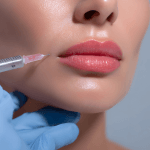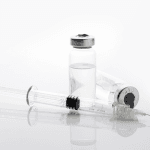Clinic teams field daily questions about neuromodulators, adverse effects, and brand differences. This guide frames botulinum toxin injections from an operational viewpoint, with practical language you can use in consults and procurement reviews. It also addresses common online claims (cancer, stroke, “toxicity,” and “hair Botox”) so your team can respond consistently and document appropriately.
Key Takeaways
- Confirm each product’s label and approved uses.
- Units are product-specific and not interchangeable.
- Set a standard counseling script for expected reactions.
- Document lot, expiry, and chain-of-custody every time.
- Use verified sourcing pathways for brand integrity.
Botulinum Toxin Injections: Clinic-Facing Overview
Botulinum toxin products are biologics derived from bacterial fermentation. The active substance is produced by Clostridium botulinum in controlled manufacturing. Patients sometimes ask “what animal is Botox made from.” In typical manufacturing, the toxin is not animal-derived. However, individual products can include human- or nonhuman-derived excipients. You should confirm ingredients on the official label and your supplier documentation.
At a high level, these agents reduce targeted muscle activity by inhibiting acetylcholine release at the neuromuscular junction. Clinically, the effect is localized when administered appropriately, but labeling across products includes warnings about potential spread of toxin effect. This is why intake screening, informed consent, and standardized aftercare instructions matter in both aesthetic and therapeutic settings.
Many teams also need plain-language clarity on botulinum toxin vs botox. “Botulinum toxin” is the class. “Botox” is a specific brand name. Patients often use “Botox” as a catch-all term, similar to “bandage.” For documentation, it helps to record the exact product name, the lot number, and the indication language used in your charting template.
MedWholesaleSupplies works with licensed healthcare professionals and clinic accounts.
Where These Treatments Fit in Clinical Services
Botulinum toxin uses vary by product label and jurisdiction. In aesthetics, the most common patient intent relates to facial lines, with search terms like botox treatment for face, botox treatment, and botox before and after. In medical care, labeled uses may include conditions such as cervical dystonia, spasticity, chronic migraine prophylaxis, and hyperhidrosis. Because indications differ, your clinic’s protocols should tie each product to its approved labeling and your service line policies.
Operationally, you will get better consistency if you separate (1) patient education materials, (2) consent language, and (3) billing documentation by indication type. That split helps when a patient arrives with screenshots of “long-term botox side effects pictures” or social posts about “toxins.” Your staff can acknowledge the concern, then pivot to the specific product label, expected local reactions, and the clinic’s safety process.
Botox Injection Uses for Face vs. Medical Use
Patients often ask about botox injection uses for face and assume the same approach applies to non-aesthetic care. From a clinic workflow standpoint, the key differences are documentation and monitoring expectations, not marketing claims. Aesthetic visits typically require careful photo documentation and a consistent counseling script about local injection-site effects. Therapeutic visits often require clearer functional baselines, symptom scoring, or payer-driven documentation. In both settings, keep brand names and product identifiers precise, since units are not interchangeable across products. For additional orientation, see Botox Gold Standard Overview and Exploring Botox Options.
From a procurement angle, your formulary decision should reflect your service mix. A med-spa-forward clinic may prioritize predictable aesthetic workflows. A neurology or rehab service may emphasize documentation requirements, scheduling cadence, and inventory controls that support medically complex patients.
When you evaluate botulinum toxin injections, align the product choice with your actual patient pathways.
Popular Brands and How Clinics Compare Them
Teams commonly compare brand-name options such as Botox, Dysport, Xeomin, Bocouture, Azzalure, and other regionally available products. MedWholesaleSupplies lists several examples for reference, including Botox Product Listing, Dysport Product Listing, Xeomin Product Listing, and Nabota 100 IU Listing. For clinic education hubs, you can also browse Botox Category and Xeomin Category.
Procurement teams should resist “duration” and “strength” comparisons unless they are grounded in approved labeling and high-quality evidence. In practice, selection often comes down to operational fit: reconstitution or preparation steps (if applicable), storage requirements, training familiarity, patient population, and how your clinic standardizes dosing documentation (without implying that units are equivalent across brands).
How to Compare Products Without Overstating Differences
- Labeling scope: match indications to services offered.
- Unit conventions: document product-specific units precisely.
- Handling steps: confirm storage and preparation requirements.
- Supply continuity: ensure consistent sourcing documentation.
- Staff competency: align training with the chosen product.
If your clinicians want deeper context on brand-to-brand framing, consider Botox vs Dysport Analysis and Xeomin and Botox Comparison. Use these as discussion starters, then anchor final decisions to labeling, local regulations, and your clinic’s risk management approach.
MedWholesaleSupplies focuses on authentic brand-name medical products for licensed clinical use.
As you standardize botulinum toxin injections across services, write down “what varies” versus “what must not.”
Safety, Adverse Effects, and Questions Patients Bring In
Patients are exposed to a high volume of mixed-quality information. It often shows up as direct questions: botox side effects, is botox safe, reasons not to get botox, or reasons not to get botox on forehead. Your clinic can respond best with a consistent structure: expected local reactions, less common but clinically important adverse events, and the steps you take to reduce risk. Avoid debating social media anecdotes. Instead, use label language and your documentation process.
Local reactions may include injection-site pain, bruising, swelling, and transient asymmetry. Patients also ask about side effects of botox on forehead, including eyelid or brow droop (ptosis) concerns. Without giving individual medical advice, you can explain that technique, anatomy, and patient-specific factors matter. You can also document baseline facial findings, prior procedures, and any neuromuscular history that could increase complexity.
Why it matters: A consistent counseling script reduces confusion and improves chart defensibility.
Neurological and Systemic Signals to Take Seriously
Online searches like botox neurological side effects, botox neurological side effects long-term, and can botox cause a stroke usually reflect fear of systemic toxicity. Product labeling for botulinum toxin medicines includes warnings about possible toxin spread, which can present with symptoms beyond the injection site. Clinics should train staff to recognize and escalate concerning reports, especially dysphagia (trouble swallowing), dyspnea (trouble breathing), generalized weakness, or vision changes. Your role is not to diagnose by phone, but to triage appropriately and document the call, the guidance provided, and the clinician notification pathway. Ensure your consent materials reflect label warnings and your follow-up instructions are easy to understand.
For long-horizon concerns, patients may ask is botox safe long-term or bring “long-term botox side effects pictures.” The evidence base varies by indication and dosing patterns, and product labeling should be your primary anchor. When discussing repeated treatments, keep the message conservative: outcomes and risks depend on the product, the treated condition, patient factors, and treatment technique.
Patients may also ask can botox cause cancer or can hair botox cause cancer. It helps to separate two different topics. Botulinum toxin medicines are prescription biologics with regulated manufacturing and labeling; they are not typically described as carcinogens in standard patient education. “Hair Botox” is a marketing term for hair conditioning treatments and does not imply botulinum toxin is present. Still, clinics should not dismiss the question. Document what the patient means, then provide clear, label-based education for the injectable medicine you actually use.
Finally, discuss timelines carefully. “When do botox side effects go away” has no single answer, and it depends on the effect being discussed (bruising versus functional weakness). It is safer to use general language and reinforce your clinic’s follow-up policy and escalation criteria.
In your adverse event documentation, note the product name, lot, site, and symptom onset details after botulinum toxin injections.
Procurement, Documentation, and Inventory Controls
In a regulated clinic environment, product integrity is part of patient safety. Build procurement steps that work even during staff turnover. Start with supplier qualification, then lock in receiving and inventory procedures that capture lot numbers, expiry dates, and storage conditions. If you operate across multiple sites, standardize naming conventions in your EHR so documentation remains searchable during audits.
MedWholesaleSupplies sources through vetted distributors and expects clinic-level account verification.
Storage and handling requirements vary by product and should be confirmed on labeling and supplier inserts. Your receiving staff should verify packaging condition and reconcile quantities against invoices. If your practice participates in US distribution pathways, align internal controls with your state and federal obligations and your organization’s compliance policies.
Clinic Workflow Snapshot (Operations View)
- Verify: confirm licensure and authorized ordering roles.
- Document: create a formulary entry per product.
- Receive: inspect shipment condition and reconciliation.
- Store: follow labeled conditions and segregation rules.
- Prepare: use trained staff and aseptic technique policies.
- Administer: document product name, lot, and site map.
- Record: capture adverse events and follow-up outcomes.
Quick tip: Add a mandatory lot-number field to injection note templates.
To reduce avoidable variance, use a short internal checklist during onboarding and whenever you add a new brand. If you need background reading for staff education, Xeomin vs Dysport Overview can help frame non-promotional differences, and Exploring Botox Options can support a standardized terminology guide.
Documentation and Compliance Checklist
- Supplier file: licenses and required attestations.
- Product file: current label and storage conditions.
- Receiving log: date, lot, expiry, quantity.
- Inventory log: movement, wastage, reconciliation.
- Clinical note: product, lot, sites, consent.
- Incident log: calls, symptoms, escalation steps.
These steps do not replace clinical judgment. They help your clinic demonstrate control, traceability, and consistent patient communication.
Authoritative Sources
- FDA Drug Labels (search by product name)
- FDA Drug Safety and Availability updates
- MedlinePlus: Botulinum Toxin Injection information
Putting This Into Practice
Most patient concerns are manageable when your clinic is consistent. Use precise product naming, avoid unit equivalence statements, and anchor counseling to labeling. Then back it up with traceable procurement and inventory controls. Over time, this approach reduces avoidable confusion around brand selection, side effects, and long-term safety narratives.
This content is for informational purposes only and is not a substitute for professional medical advice.






